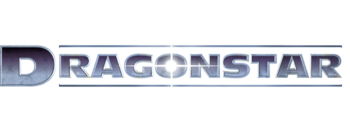Dragonstar: Difference between revisions
1d4chan>The Hat That Was mNo edit summary |
m (1 revision imported) |
(No difference)
| |
Revision as of 18:22, 18 June 2023

Dragonstar is a Science Fantasy setting for Dungeons & Dragons 3rd Edition, released by Fantasy Flight Games between the years 2001 and 2007. It is basically either Spelljammer with more sci-fi jammed into it, a less-clusterfucky precursor to Starfinder, or a legitimately good Dungeons & Dragons space opera game, depending on who you ask.
The game's setting is a galaxy under the dominion of the Dragon Empire. The Dragon Empire is an empire ruled by the ten houses of, you guessed it, dragons. Of these houses, five are chromatic and five are metallic. The Empire is led by Mezzenbone, an evil red dragon.
Across the galaxy, fantasy races inhabit countless worlds. Scientists and archmages in the game try to come up with a logical explanation as to why the races had similar linguistic traits. Eventually, a prominent religious leader proposed a theory: all the gods of every religion were the same, just different aspects of the twelve "True Gods". These aspects were the 12 "Deitypes," short for Deity Archetypes. Deitypes are basic, primordial, archetypal icons such as The Father, The Mother, The Magus, The Smith, The Destroyer and The Trickster. Some deities have elements of two or more Deitypes. These 12 Deitypes seeded similarities all across the life-supporting worlds of the galaxy. This theory led to a new religion that formed the basis of an emerging unified interstellar culture. The dragons eventually rose to dominate and unite this culture under a single massive Dragon Empire that rules all of inhabited space. The dragons would assimilate newly discovered inhabited planets along the edge of the Empire, also known as the Outlands (not to be confused with the outer plane of the same name).
The Dragonstar setting can easily combine preexisting Dungeons & Dragons and other D20 material and settings. A PC group can be made up of character races and classes in any combination and be rationally integrated with little work. A basic premise of the setting is that advanced technology is sufficient to handle most tasks, but things that are considered impossible by our current understanding of physics, such as faster-than-light travel between stars, force-fields, and teleportation, are accomplished with magic. Characters use a combination of technology, conventional weaponry and magic in combat.
The following products were published by Fantasy Flight games for the Dragonstar campaign setting:
- DS01 Starfarer's Handbook (ISBN 978-1589940567)
- DS02 Guide to the Galaxy (ISBN 978-1589940574)
- DS03 Imperial Supply (ISBN 978-1589940604)
- DS04 Player's Companion (ISBN 978-1589940260)
- DS05 Galactic Races (ISBN 978-1589940789)
- DS06 Smuggler's Run (ISBN 978-1589941328)
The following products were licensed for publication by Mystic Eye Games (now defunct) for the Dragonstar Campaign setting:
- MYG1101 Raw Recruits (ISBN 978-0971923867) - An adventure for characters of Levels 1 - 6
- MYG1102 Heart of the Machine (ISBN 978-1932374063) - An adventure for characters of Level 4
Races
Dragonstar featured a sizable number of races. In addition to the "Core 20" races (Human, Elf, Dwarf, Gnome, Halfling, Half-Elf, Half-Orc), the core splatbook, The Starfarer's Handbook, also featured PC stats for the Drow, Half-Dragon, Orc, and the first of the new races, the Soulmech.
This was then followed up by the Galactic Races splatbook, which again featured a combination of classic D&D monsters - the Centaur, the Derro, the Kobold, the Doppelganger (here called just "Doppel" and somewhat weaker, closer to the Eberron Changeling), the Genasi (called "Elems" here), and the Lizardfolk - and a number of new races.
- Soulmech - A Warforged expy, in the form of a robot given true life and sapience by being imbued with the soul of a deceased humanoid.
- Eleti - Skeleton-like sapient, free-willed undead, who tend to use their vast laundry list of immunities to become very successful deep-space engineers.
- Ith-kon - A sub-race of the illithids engineered as psychic commando style warrior-slaves; unlike normal mind flayers, they are closer to humanoids, so they are bi-gendered race and do not feed on sapient brain tissue.
- Oruk - Orc/ogre hybrids who are of much value to the Dragon Empire for their stature and physical prowess.
- Pershala - The obligatory space catfolk race.
- Pevishan - An illumian-like race; a human subrace born with an innate affinity for magic that manifests itself as sigil-like markings on their skin.
- Quasta - Bizarre aberrations something like a cross between a hawk and a beholder.
- Sathoni - A race of dryad-like plant creatures whose former aggressively expansionistic empire was crushed and subordinated by the Dragon Empire.
- Siarran - Four-armed humanoids whose culture revolves entirely around the concept of personal freedom and the pursuit of art.
- Tarn Idoun - Mystical creatures made of animate magical crystal, similar in composition to Ioun Stones.
- Ulb - Sapient slimes.
- Tsalokhi - A gith-like psionic race bred from human root-stock by their former masters, the mind flayers.